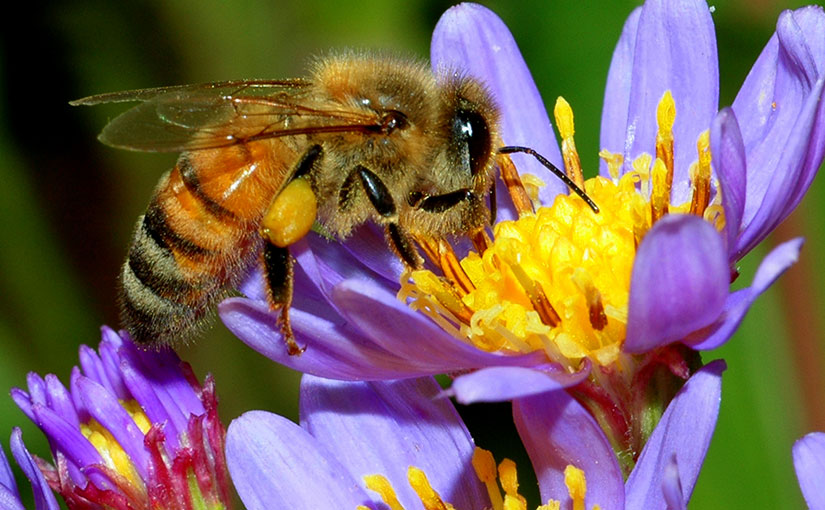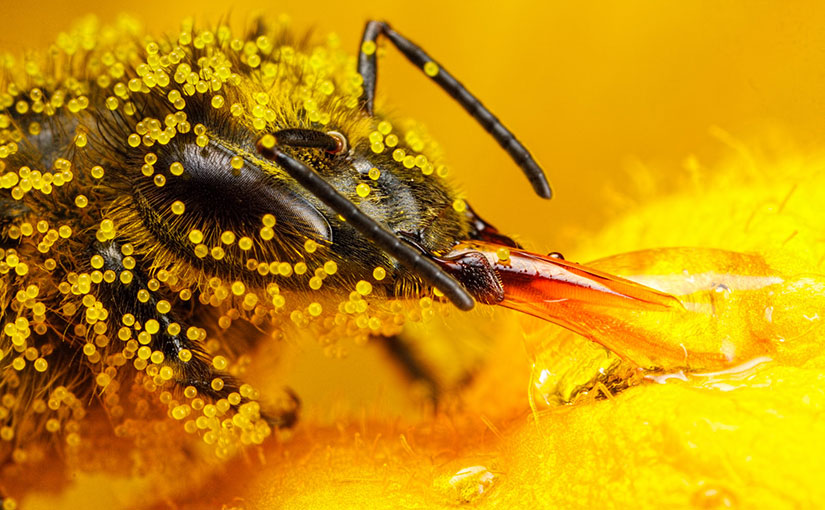Warre Beekeeping involves the use of a A Warre Beehive which is a vertical top bar hive that is simple to build and easy to use. The cost is about one-third to one-fourth the cost of one standard ten frame Langstroth hive. A Warre (pronounced war-ray) hive is simple to manage and maintain and incorporates natural beekeeping methods.
Also known as tiered or supered top bar hives, a vertical top bar hive is such as the Warre hive is friendly to the bees since they are allowed to draw out their own comb, thereby ensuring a hive environment that is healthier and better suited to their own needs.
Characteristics of Warre Beekeeping
Warre hives have a simple hive box with no frames. The bees draw down their own comb from top bars affixed to each box. The quilt provides a layer of insulation to the hive. It sits under the roof on top of the uppermost box, as you can see below.
Warre hives are easy to build from materials available at your building supply shop. The Warre hive is designed so that it will not take enormous amounts of time out of your busy schedule.
In short, the Warre Hive is a good solution for those who are interested in keeping bees simply, naturally and wholesomely without harsh chemicals or medications.
Description of the Warre Hive
The Warre Hive comprises tiers of identical boxes fitted with top-bars, but no frames. Its essential design and usage features can be summarized as follows:
- Image and description courtesy of the Warre English Portal
- hive-body box internal dimensions 300 x 300 x 210 mm, with projecting handles
- eight 36mm centered 24mm wide top-bars resting in rebates in each box (NO FRAMES)
- wax starter strips under each top bar (NO FOUNDATION)
- flat floor, notched with a 120mm wide entrance, alighting board
- coarse weave cloth covering the top-bars of the top box
- 100 mm high ‘quilt’ boxed with wood, filled with straw, sawdust, wood shavings etc., retained with cloth
- gabled roof containing a ventilated ‘loft’ and separated from the quilt by a mouse-proof board
Here are some more features of the Warre Hive:
- the bees build natural comb in the first (top) box and extend downwards into further boxes
- new boxes are added at the bottom
- one or more boxes of honey are harvested from the top after the main flow
- the bees winter on two boxes of comb containing a minimum of 12 kg stores (France)
- honey is harvested by draining, or by centrifuging combs in baskets
- at the spring visit, the hive is expanded by one or more boxes, containing with starter strips or comb
History of the Warre Beehive
The Warre Hive (also known as the People’s Hive) was developed in France by Emile Warré (1876?-1951). Warré developed the People’s Hive after experimenting with over 350 hives of various designs and types. It was his goal to find a hive system that was simple, natural, economical, and bee-friendly.
The result was the People’s Hive (Ruche Populaire). He outlined the construction and operation of the hive in his book “Beekeeping for All.” This book is available in English as a free download. If you are interested, English Plans for the Warre Hive are also available.
Warré is not alone in his findings, though. In 1783, a German beekeeper named Johann Ludwig Christ developed a beekeeping system almost identical to that of Warre. And in Japan, many beekeepers still employ a similar system of beekeeping that has been in constant use since the Edo period of Japanese history (A.D.1586 to A.D.1911).
How to Build a Warre Beehive
Where to Buy a Warre Beehive
BeeThinking.com
TheWarreStore.com


